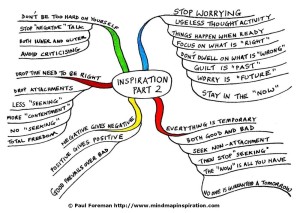On our life journey, we will face many challenges. Some may be easy to overcome; others may test every fiber of our being in attempting to overcome them. And then there are those that seem so overwhelming that we become paralyzed and unable to do anything. We need to be careful of anything that paralyzes us because as Edwin Lewis Cole (founder of the Christian Men’s Network) shares, “You don’t drown by falling in the water. You drown by staying there.” This sage advice is a great reminder that it isn’t our challenges that defeat us (falling in the water), but rather our inability to come up with an unconventional, unique, resourceful, or divergent solution to the challenge (just staying put in the water).
Our inability to come up with an unconventional, unique, resourceful, or divergent solution is what Albert Einstein (German born American physicist who developed the special and general theories of relativity and Nobel Prize winner for Physics in 1921) meant when he said, “We can’t solve problems by using the same kind of thinking we used when we created them.” Bingo! That is so true. At times, we need to think differently in order to deal with challenges or problems. Louise Hay, author of The Power is Within You, offers: “I do not fix problems. I fix my thinking. Then problems fix themselves.”
Indeed. We need to fix our thinking and all that means is we have to think differently; that when faced with a challenge or a problem that seems insurmountable, we need to tap into our ingenious self so we can be inventive, creative, and divergent in coming up with a way, with a solution, to move us “out of the water” and deal with whatever we are facing with different thinking. But, how do we fix our thinking? We can:
Work on overcoming self-limiting thoughts. These consist of the chatter in our heads that tells us that we can’t or we won’t or we shouldn’t. The more the chatter revolves around these thoughts, the more we believe them and before we know it, those thoughts become our mindset. Switch to thoughts that are more open and create possibility. Think in terms of ‘what if.’
Be non-judgmental. We need to approach whatever we’re facing with a neutral frame of mind. Be objective.
See challenges or problems as opportunities instead of obstacles. Take control and focus on solutions (rather than the situation/the challenge). By doing this we do not give any power to the situation/the problem, but rather, give the power to working on solving and moving beyond the situation.
Have confidence. Believing challenges or problems can be overcome is half the battle. Steer clear from doubts because they will only immobilize any effort. Self-doubts also turn attention away from solutions and keep the attention on the issue. The calmer one can be, the clearer the mind and the better one is able to think divergently and creatively about the issue(s). Winners don’t quit; they rise above to meet the challenge head on.
Be open to brainstorming. When we brainstorm, ideas are spontaneously generated in response to a problem, issue, or situation. Brainstorming helps us fix our thinking because it helps us go beyond our same old thought patterns. Productive brainstorming will generate a lot of different ideas especially off-the-wall or out-of-left-field ideas. Don’t even think about whether the idea will work or solve the issue – just get any ideas and thoughts out. After the ‘mind dump’ of ideas, sort and categorize them and then begin to look for ones that will work for the situation at hand.
Try new ways of thinking: kaleidoscopic, outside-the-box, divergent, innovative.
- Kaleidoscopic – take all the pieces of the situation and rearrange them into a new pattern; tweak what is already there to create new possibilities.
- Outside-the-box – thoughts outside the box help us view things from a different perspective. When we “climb out of the box,” we are able to see more; many possible solutions or directions may emerge. It is definitely easier to put things into a different perspective when our view isn’t the “same four walls.”
- Divergent – walk to the beat of a different drummer; come up with new and different ideas to deal with the situation. Following the crowd isn’t always the best strategy when dealing with issues.
- Innovative – think across borders and through boundaries. It is a way of thinking that questions and challenges prevailing thought and opens us up to numerous solutions rather than just the way something has always been done.
There is no doubt that we will all face our share of challenging times during our life journey. It is important to remember that it isn’t the challenging times that may get the better of us. It is when we stay rooted in the same spot that we run into trouble. When we stay focused on the situation at hand and feel there is nothing we can do about it and keep thinking that way, we are doomed because those thoughts become reality. (It’s the ol’ self-fulfilling prophecy.) But, if we can or are willing to think differently about what we are facing, we have a far better chance of the challenge, situation, or problem “fixing itself;” of coming to a reasonable resolution.







































